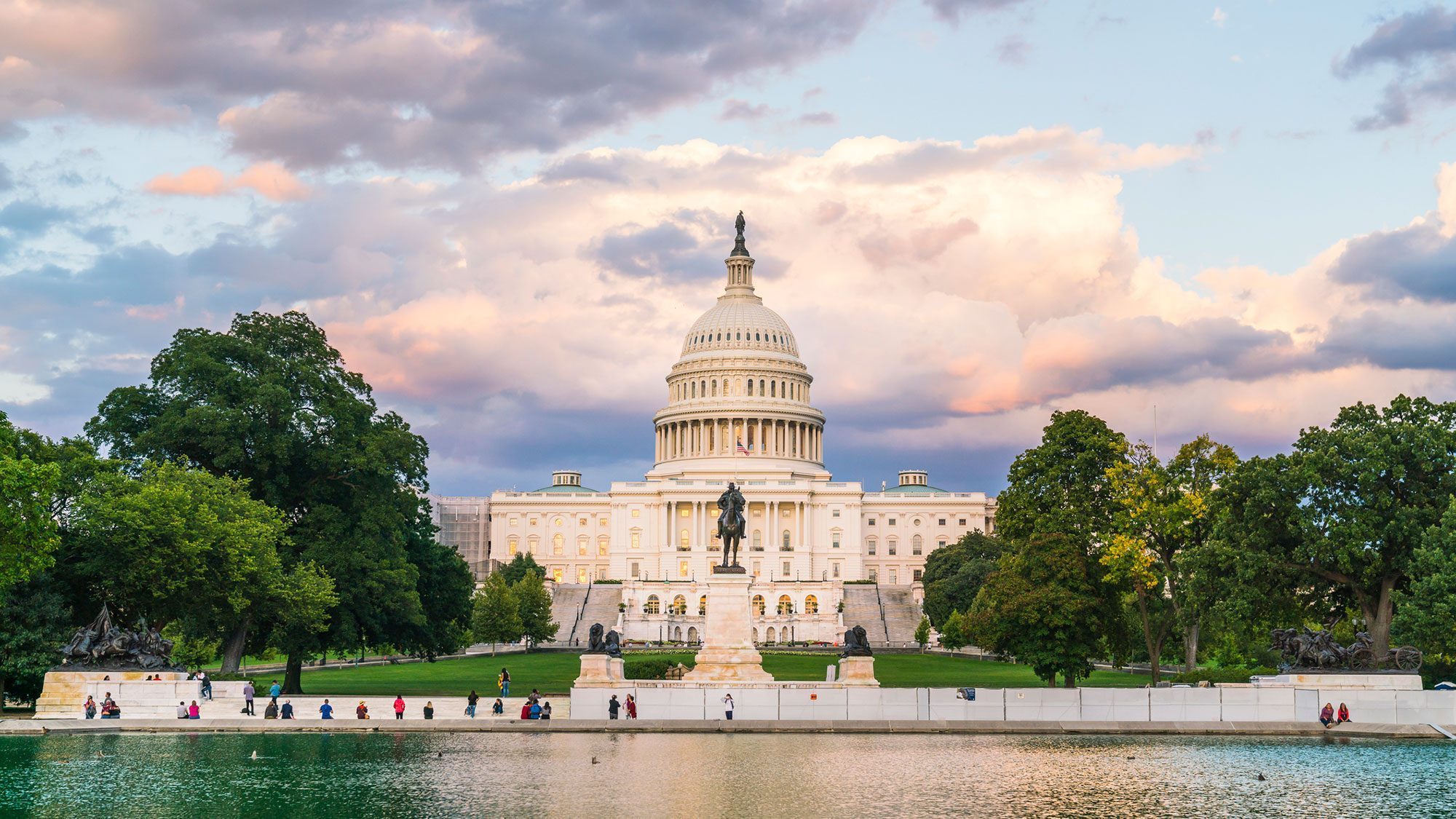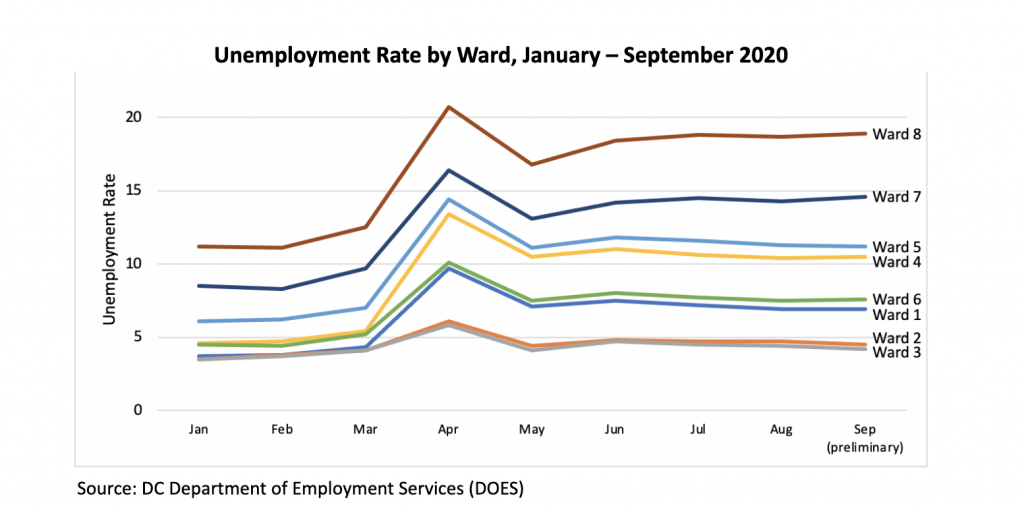Compounding job losses, Workers of Color who remained employed faced a higher likelihood of exposure to the virus. Many jobs deemed “essential” are low-wage roles that are disproportionately held by Black and Hispanic/Latinx workers with varied access to personal protective gear, particularly in the pandemic’s early months. As a result, many workers – and their loved ones – have been at higher risk of contracting the virus than White workers.
These workforce inequities may be contributing to the racial disparities in DC’s COVID-19 cases. While approximately 46% of DC’s population is Black, 76% of the residents who have died from COVID-19 were Black. And although 11% of DC’s residents are Hispanic/Latinx, they comprise approximately 22% of all COVID-19 cases in the city. Despite the disproportionate number of COVID-19 cases in Black communities, more vaccines in the District have gone to White residents. Only eight of the District’s 30 vaccine centers are located east of the Anacostia River, and as of February 14, 2021, only 10% of DC’s fully vaccinated population lived in Wards 7 and 8. Clearly, any pandemic recovery plan must prioritize both Black workers’ and Black residents’ health.
Looking Forward: Ways to Prioritize Racial Equity in DC’s Workforce
A year into the COVID-19 pandemic, the virus has proven difficult to rein in and its impact on the District’s residents and workers continues to evolve. As the District moves forward, there is an urgent need to embed racial equity into all aspects of the recovery. The workforce development ecosystem will best serve its residents when its budget, programs, and policies provide the support that specific workers need.
For the past year, the McCourt School’s Policy Innovation Lab has been partnering with local non-profit DC Appleseed Center for Law & Justice to highlight the pandemic’s effect on Black and Hispanic/Latinx workers and advocate for post-COVID solutions that remedy racial inequities in the DC workforce. We are advocating for the District of Columbia to adopt a racial equity framework when considering how to develop, fund, and support workforce programs.
DC’s Racial Equity Achieves Results (REACH) Amendment Act of 2020 provides an excellent starting point. The REACH Act establishes, among other things, a series of tools that will “enable District agencies to incorporate racial equity into their operations, performance-based budgets, programs, policies, rules, and regulations, and to ensure alignment between departmental and District-wide programs and initiatives.”
As the city seeks to operationalize the REACH Act, there are ways it can be tailored to workforce development. The Lab’s preliminary ideas for DC Appleseed give a sense of the types of questions and analyses that might be useful when planning, implementing, and evaluating workforce development policies, programs, and budgets. In all cases, centering the perspectives of DC residents who use these programs and participate in the workforce ecosystem will be critical to any policy intervention’s success. Comprehensive community and user-based decision-making is a powerful racial equity tool.
Questions to Operationalize the REACH Act for Workforce Development
REACH Act 2020 Racial Equity Tool: Develop metrics to measure progress in redressing disparate social and economic outcomes in the District based on race, sex, and ethnicity
Workforce Development Questions:
- What is the unemployment rate, by race?
- What is the underemployment rate, by race?
- What is the percentage of employees who have benefits such as paid vacation, paid family sick leave, employer-sponsored healthcare, transportation benefits, or subsidized child care services, by race?
- What is the percentage of employees who have consistent work schedules/hours, by race?
- What is the percentage of “gig economy” workers, by race?
- What is the average commute time, by race?
REACH Act 2020 Racial Equity Tool: Track and measure how programmatic and policy decisions benefit or burden individuals based on race, sex, or ethnicity
Workforce Development Questions:
- Where are workforce training and education programs located?
- Are training and education programs distributed equally across DC Wards?
- What percentage of workforce training and education programs are located near public transportation?
- What percentage of workforce training and education programs are managed by White leaders?
REACH Act 2020 Racial Equity Tool: Evaluate the efficacy of District agencies’ strategic initiatives and programs aimed at reducing disparate outcomes
- What is the graduation rate of workforce training and education programs, by race?
- What is the percentage of workforce training and education graduates who are employed within one year of graduation, by race?
- What sectors are graduates of workforce training and education programs employed in, by race?
The Lab also recommends the following questions related to community-based decision-making:
- Are workers’ voices included when considering new programs, funding, or policies?
- How are workers’ voices included in program evaluations?
- Are workers from all Wards included in conversations about workforce development?
- Are community listening sessions or town halls accessible to workers from Wards 7 and 8, available in multiple languages, or welcoming for workers with young children?

